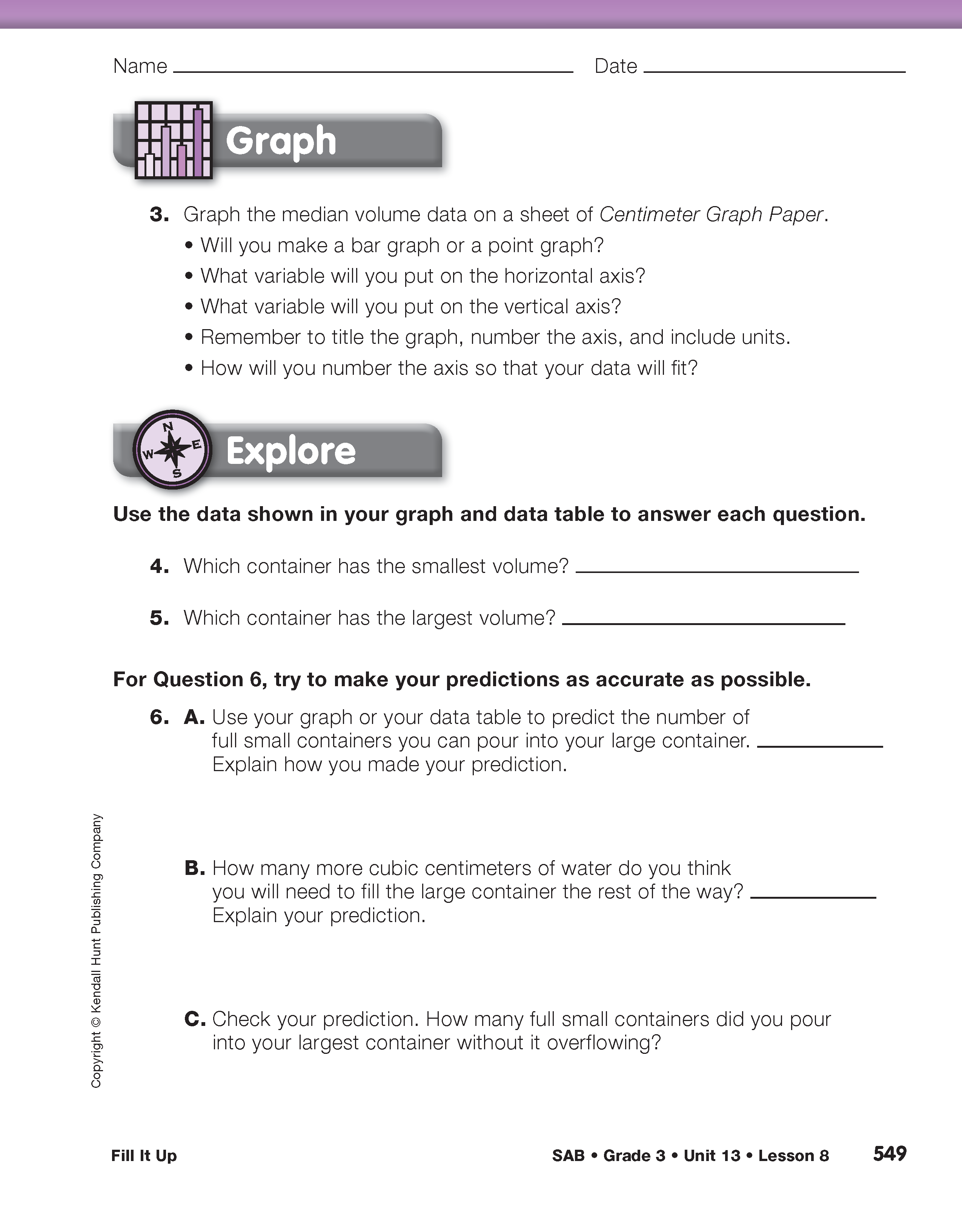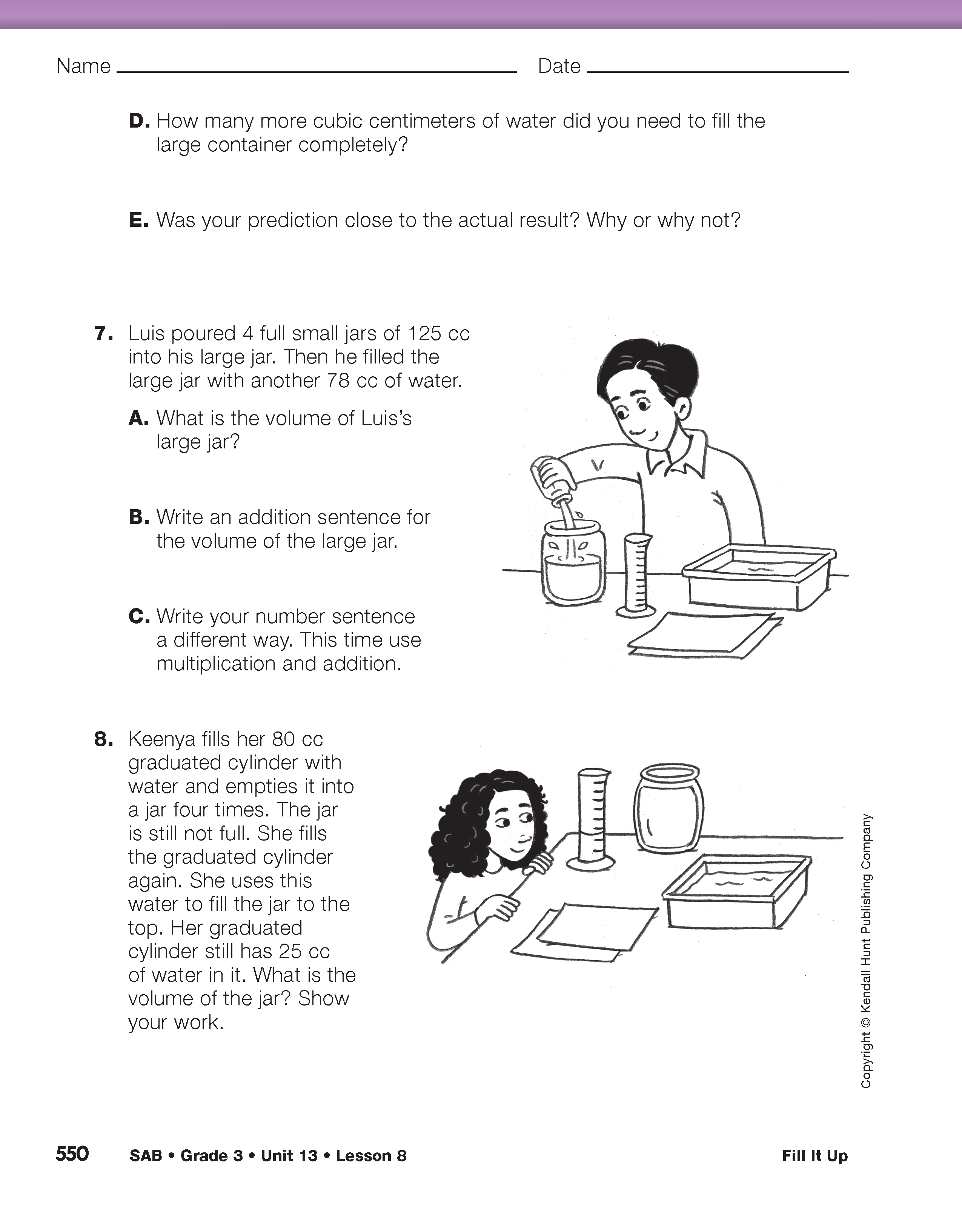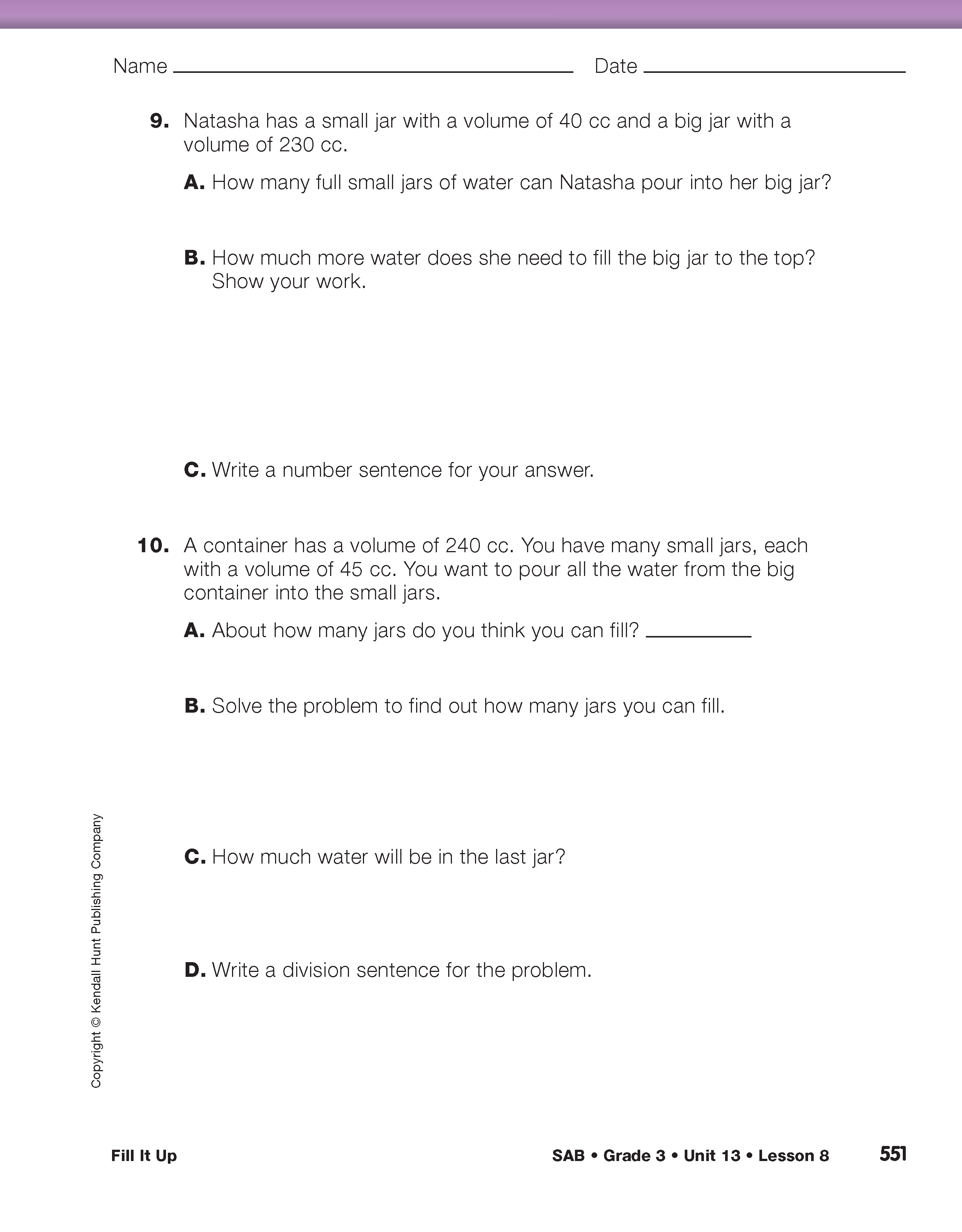Fill It Up
Est. Class Sessions: 3Developing the Lesson
Part 4. Exploring the Data
Assign Questions 4–6 on the Fill It Up Lab pages in the Student Activity Book.
In Questions 4–6, students explore their data and use it to make predictions. Remind students to use the median values in their data tables or graphs to answer these questions.
As students work, take note of those who use a graph to solve Question 6 and those who use a data table. Students will share solution strategies next, and you will want to select good examples of each strategy.
The steps outlined in Question 6 provide an excellent opportunity to use the collected data to investigate division concepts. Students must predict the number of full small containers that can be poured into the largest container. Then they must find the amount of water needed to fill the large container the rest of the way. This scenario is a classic division problem. However, students may use addition, subtraction, or multiplication as well.
After they fill the small container for the last time and pour as much as they can into the large container, they will need to figure out how much water they just poured. To do this, students can use a graduated cylinder to measure the amount left in the small jar and then subtract that number from the amount the small container holds.
When students have completed Questions 4–6, take time to discuss Question 6. Select a student who has used a graph to answer the question and then one who has used a data table. Ask students to show a display of the tool they used to demonstrate.
As each student shares, ask:
Question 6E asks whether their prediction was close to their actual result. This should generate a discussion of what it means to be “close.” Scientists often measure closeness in terms of percent error. For now, you can have the class vote on what they feel “close” should be. They might agree that “within 1 cc” is probably too much to expect but that “within 5 or 10 cc” is a reasonable standard for closeness. Sometimes children go back to their predictions and change them to match their results. Explain that although their predictions should be “close,” they are not expected to be exact. In fact, it would be very unusual for their predictions to match their experimental results exactly. See Content Note.
Assign Questions 7–10. Question 7 uses fictitious data to prompt students to write number sentences. See TIMS Tip. Questions 8–10 are aimed at checking students' understanding of the work they have done by asking them to relate it to similar situations. As students are working on these questions, look for a variety of solution strategies that can be shared for Summarizing the Lesson.
In Question 10, students are asked what happens when a 240 cc container is emptied into several 45 cc jars. This provides another opportunity to explore division with a remainder. In Question 10A students estimate the number of small jars they can fill. They can do this by rounding 45 cc up to 50 cc. Since 5 × 50 cc = 250 cc, a reasonable estimate is 5 jars.
Let students solve the problem in whatever way is natural to them. They may choose to solve it by subtracting 45 cc repeatedly, beginning with 240 cc and ending when an amount less than 45 cc is left. They will find that they subtract 5 times and have 15 cc remaining. Another way is to add 45 cc to itself until they almost reach 240 cc and then calculate how much is left over. Using a calculator, they would get 240 cc ÷ 45 cc = 5.3333333.
Although students are not ready yet to discuss the exact meaning of this decimal representation of the remainder, you can explain that the calculator answer means that they can fill five small jars and have some water left over. To calculate the amount left over, they first would multiply 5 × 45 cc and get 225 cc. Then they would subtract 225 cc from 240 cc and get 15 cc.

















